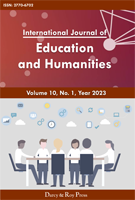Machine Translation and Mathematics: From Thought to System
DOI:
https://doi.org/10.54097/k459b515Keywords:
Machine Translation, Mathematical Reasoning, Neural Networks, Computational Linguistics, STEM EducationAbstract
The graduate course Text Information Processing and Machine Translation at Northeastern University serves as a core component of the computer science curriculum. In recent years, the course has increasingly emphasized the centrality of mathematical thinking to the understanding and advancement of machine translation. This paper, the second in the Mathematics and Machine Translation series, examines the intricate and multidimensional interrelations between mathematics and machine translation from both educational and theoretical perspectives. This paper contends that mathematics functions not merely as a technical instrument but as an epistemological foundation for machine translation, shaping its development across multiple dimensions: cognitive paradigms, symbolic representation, historical trajectories, innovative methodologies, and systematic architectures. By tracing how mathematical reasoning has informed the evolution of translation paradigms, from rule-based frameworks to neural network models, and by analyzing the synergistic roles of linear algebra, calculus, and probability theory, we demonstrate that cultivating deep mathematical literacy is essential for sustained innovation in machine translation research and pedagogy.
Downloads
References
[1] H.L. Wu, Y. Liu, Guiding Master Students in Computer Science to Value and Strive to Learn Mathematics through the Text Information Processing and Machine Translation Teaching, Journal of Education and Educational Research, Vol.11 (2024), p.255-257.
[2] R.P. Perry, J.C. Smart: The Scholarship of Teaching and Learning in Higher Education: An Evidence-Based Perspective (Springer, Dordrecht 2007).
[3] W.S. Jiang: Mathematical elements (Tsinghua University Press, Beijing 2023).
[4] J.D. Novak: A Theory of Education (Cornell University Press, Ithaca 1977).
[5] Mickaël Launay: Great Mathematical Novels: From Prehistory to the Present (Le grand roman des maths: de la préhistoire à nos jours) (Flammarion Press, Paris 2016).
[6] T. Buzan, B. Buzan: The Mind Map Book: How to Use Radiant Thinking to Maximize Your Brain's Untapped Potential (Plume Press, New York 1996).
[7] G.D. Phye: Handbook of Classroom Assessment: Learning, Achievement and Adjustment (Academic Press, Cambridge 1996).
[8] J.D. Novak, D.B. Gowin: Learning How to Learn (Cambridge University Press, Cambridge 1984).
[9] D.L. Stufflebeam, C.L.S. Coryn: Evaluation Theory, Models, and Applications, 2nd Edition (Jossey-Bass, Indianapolis 2014).
Downloads
Published
Issue
Section
License
Copyright (c) 2025 International Journal of Education and Humanities

This work is licensed under a Creative Commons Attribution 4.0 International License.

















